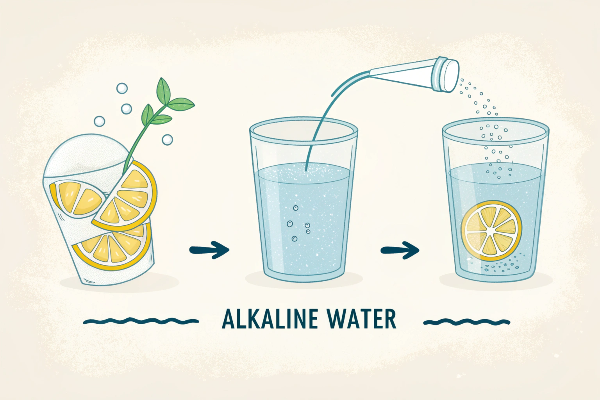Feeling overwhelmed by complex industrial processes? Ever wondered how we get pure copper from raw ore? It’s a fascinating journey, and you might be surprised by how chemistry plays a starring role.
Electrowinning is like a high-tech "plating" process. It uses electricity to extract copper from a solution, depositing it onto a plate. This results in very pure copper, often exceeding 99.9% purity.

But, there are different methods used to achieve the final copper, and it is easy to get lost. Let’s take a closer look into different methods, principles, best ways and voltages.
What is the Process of Electro Refining of Copper?
Struggling to understand how copper goes from impure to incredibly pure? It’s a common question, and the answer lies in a process called electrorefining. It’s like giving copper a purifying "bath."
Electrorefining1 uses electricity to dissolve impure copper2 and then re-deposit it in a pure form. Think of it as a filtering process, but on an atomic level, leaving impurities behind.

Dive Deeper into Electrorefining
Electrorefining is a fascinating process, crucial for obtaining high-purity copper needed in various applications, from electronics to wiring. Let’s break it down further:
The Setup
- Anode: This is the impure copper, typically about 98-99% pure, coming from smelting.
- Cathode: A thin sheet of pure copper serves as a "starter" for the pure copper to deposit onto.
- Electrolyte: A solution of copper sulfate (CuSO₄) and sulfuric acid (H₂SO₄) allows the flow of copper ions.
- Electrolytic Cell: A tank containing the anodes, cathodes, and electrolyte.
The Process
- Dissolution: When electricity is applied, the impure copper anode dissolves. Copper atoms lose electrons (oxidation) and enter the electrolyte as copper ions (Cu²⁺).
- Migration: The positively charged copper ions (Cu²⁺) are attracted to the negatively charged cathode.
- Deposition: At the cathode, copper ions gain electrons (reduction) and deposit as pure copper metal (Cu).
- Impurity Management: Impurities either remain in the solution or fall to the bottom of the cell as "anode slime," which can be further processed to recover valuable metals like gold and silver.
Key Parameters
| Parameter | Description | Typical Value |
|---|---|---|
| Current Density | Amount of current per unit area of the cathode. | 200-300 A/m² |
| Voltage | Electrical potential difference between the anode and cathode. | 0.2-0.3 V |
| Electrolyte Temp | Temperature influences conductivity and efficiency. | 55-65°C |
| Electrolyte Conc. | Concentrations of copper sulfate3 and sulfuric acid in the electrolyte. | |
| Additives | Control crystal structure. | – |
This whole setup makes sure only the copper you want gets collected, leaving all the unwanted stuff behind.
What is the Principle of Electrowinning?
Ever wonder how we can "pluck" copper atoms out of a liquid solution? The principle behind this magic trick is called electrowinning. It’s like using electricity as a magnet for metal.
Electrowinning4 relies on the principle of reduction. An electric current forces copper ions in a solution to gain electrons and convert into solid copper metal. It’s a targeted extraction process.

Diving Deeper into the Principle
Let’s explore the core scientific concepts that make electrowinning work:
Electrochemical Reactions5
At the heart of electrowinning are two fundamental electrochemical reactions:
- Cathodic Reduction6: This is where the magic happens. Copper ions (Cu²⁺) in the solution encounter the cathode, which is supplied with electrons from the external power source. Each copper ion gains two electrons (2e⁻) and is reduced to solid copper metal (Cu).
- Equation: Cu²⁺(aq) + 2e⁻ → Cu(s)
Electrowinning vs. Electrorefining
| Feature | Electrowinning | Electrorefining |
|---|---|---|
| Raw Material | Low-grade ore, leach solutions | Impure copper anodes (typically from smelting) |
| Solution Type | Dilute copper-containing solution | Concentrated copper sulfate solution |
| Primary Goal | Extract copper from low-concentration sources | Purify already relatively pure copper |
| Cathode Product | Copper metal | High-purity copper metal |
| Anode | Insoluble material. | Soluble, copper-containing material. |
Electrowinning focuses on extracting copper from solutions where it’s present in relatively low concentrations. And electrorefining deals with already-concentrated copper.
What is the Best Method of Extraction of Copper?
Confused about the "best" way to get copper out of the ground? It’s a common dilemma! The truth is, the ideal method depends on several factors.
There’s no single "best" method for copper extraction. Electrowinning is excellent for low-grade ores and solutions. Smelting7 is suitable for high-grade sulfide ores, and leaching can be used for oxide ores.

Diving Deeper into Copper Extraction Methods
Let’s take a look at a comparison of the main methods:
Comparison of Copper Extraction Techniques
| Method | Description | Advantages | Disadvantages |
|---|---|---|---|
| Pyrometallurgy (Smelting) | High-temperature process using furnaces to melt and separate copper from sulfide ores. | Efficient for high-grade ores, well-established technology. | High energy consumption, significant sulfur dioxide (SO₂) emissions, not ideal for low-grade ores. |
| Hydrometallurgy8 (Leaching) | Using chemical solutions (often acids) to dissolve copper from ores, followed by separation and recovery (e.g., solvent extraction and electrowinning). | Can process low-grade ores, lower environmental impact than smelting, can recover other valuable metals. | Slower process, can generate liquid waste that needs careful management. |
| Electrowinning9 | Direct electrochemical extraction of copper from solutions (often leach solutions from hydrometallurgy). | Low energy consumption, low emissions, suitable for low-grade ores and solutions, high-purity copper. | Limited to solutions, not directly applicable to solid ores. |
| Bio-Hydrometallurgy | Bioleaching, the action of microorganisms to solubilize metals. | Environmentally friendly, cost effective. | Slow process. |
The method is determined by the type of ore you’re dealing with. Smelting is the preferred method if it is sulfide ore. For oxide ores, a leaching process might be more appropriate.
What is the Difference Between Electrolysis and Electrowinning?
Are electrolysis and electrowinning the same thing? It’s easy to get these terms mixed up! While they’re related, there’s a key difference that sets them apart.
Electrolysis10 is a broad term for using electricity to drive a chemical reaction11. Electrowinning is a specific type of electrolysis used to extract metals, like copper, from a solution.

Diving Deeper into the Differences
Let’s break down the distinctions in more detail:
Electrolysis: The General Concept
- Definition: Electrolysis is the process of using an electric current to force a non-spontaneous chemical reaction11 to occur. It’s a way of using electrical energy to create chemical change.
- Applications: Electrolysis has many uses beyond metal extraction, including:
- Splitting water into hydrogen and oxygen
- Producing chlorine and sodium hydroxide (the chlor-alkali process)
- Electroplating (coating one metal with another)
Electrowinning: A Specialized Application
| Feature | Electrolysis | Electrowinning |
|---|---|---|
| Purpose | Broad: Drive any non-spontaneous chemical reaction | Specific: Extract metals from solution |
| Raw Material | Varies widely | Metal-containing solution |
| Product | Varies widely | Solid metal deposit |
It is important to differ between electrolysis and Electrowinning for a project. Electrowinning is always a form of electrolysis, but electrolysis isn’t always electrowinning.
What is the Voltage of Copper Electrowinning?
Getting the voltage right in copper electrowinning12 is crucial, but what’s the magic number? It’s not as simple as a single value.
The typical voltage for copper electrowinning is between 1.8 and 2.5 volts. But, this can change depending on the specific conditions in the electrowinning cell.

Diving Deeper into Voltage Considerations
Let’s explore the factors that influence the voltage:
- Electrolyte Composition13: The concentration of copper ions and sulfuric acid in the electrolyte affects conductivity. Higher concentrations generally allow for lower voltages.
- Current Density: This is the amount of current flowing per unit area of the cathode. Higher current densities often require higher voltages.
- Electrode Spacing: The distance between the anode and cathode affects resistance. Closer spacing can reduce voltage requirements.
- Temperature: Higher electrolyte temperatures generally improve conductivity and can lower voltage.
- Impurities: The presence of other metals or substances in the electrolyte can alter the voltage needed.
- Overpotential14: Even under ideal conditions, a small extra voltage (overpotential) is needed to overcome the energy barrier of the electrochemical reaction.
Consequences of Incorrect Voltage
| Voltage Issue | Consequence |
|---|---|
| Too Low | Slow copper deposition, inefficient extraction. |
| Too High | Increased energy consumption, potential for unwanted side reactions (like hydrogen gas formation). |
Maintaining the voltage is very important. Keeping it low is crucial to minimize energy waste, and keeping it high can lead to problems.
-
Explore this link to understand the detailed steps and significance of electrorefining in copper purification. ↩
-
Learn about the transformation of impure copper to pure copper and its applications in various industries. ↩
-
Discover the importance of copper sulfate in the electrorefining process and its impact on copper quality. ↩
-
Explore this link to understand the detailed process and applications of electrowinning in metal extraction. ↩
-
Discover the fundamentals of electrochemical reactions and their role in various applications, including electrowinning. ↩
-
Learn more about cathodic reduction to grasp its significance in electrowinning and other electrochemical processes. ↩
-
Learn about Smelting, a traditional method for extracting copper from high-grade ores, and its advantages and disadvantages. ↩
-
Discover the process of Hydrometallurgy, which allows for the extraction of copper from low-grade ores with lower environmental impact. ↩
-
Explore this link to understand how Electrowinning efficiently extracts copper from low-grade ores with minimal environmental impact. ↩
-
Understanding electrolysis is crucial for grasping its applications in various fields, from metal extraction to water splitting. ↩
-
Learning about chemical reactions in electrolysis can deepen your understanding of how electricity drives these processes and their significance. ↩ ↩
-
Understanding copper electrowinning is essential for optimizing the extraction process and energy efficiency. Explore this resource for in-depth insights. ↩
-
The composition of the electrolyte is critical for efficient copper extraction. This link will provide valuable information on optimizing your process. ↩
-
Overpotential plays a significant role in electrowinning efficiency. Learn more about its impact on electrochemical processes through this resource. ↩





